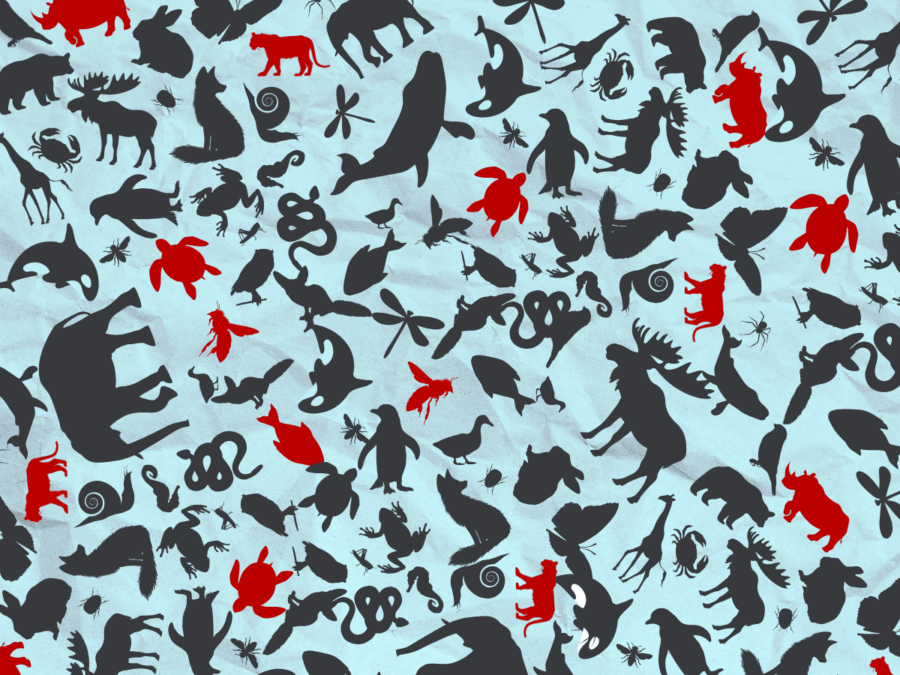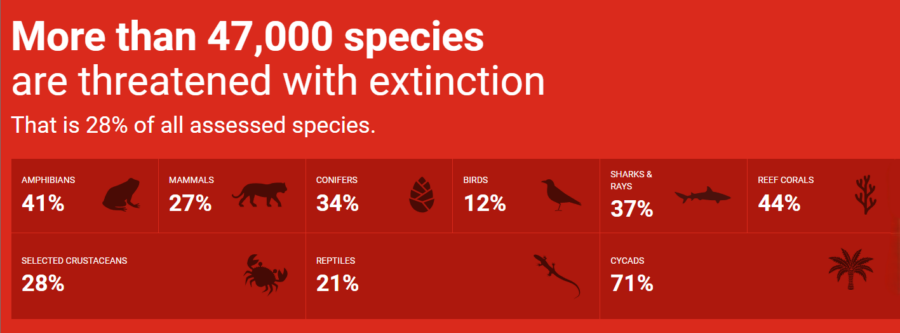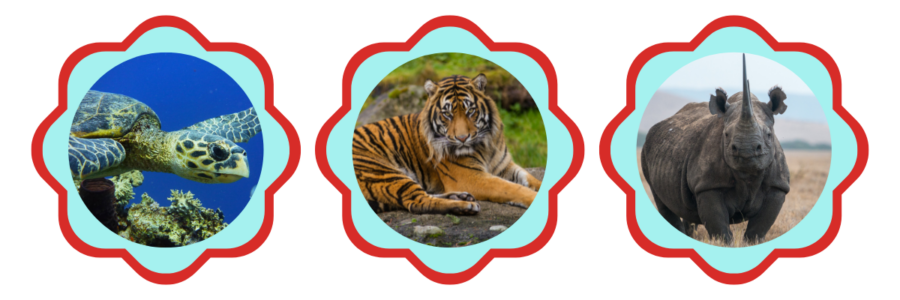#species
A Walkthrough in How to Get Involved in Biodiversity Conservation
By Sarah Robison

Biodiversity is critical to the function, continuance, and success of our environment as each species plays a role in ecosystem dynamics. As human-induced challenges such as urban development and clear-cutting increase in prevalence to meet global demand, species with small populations and decreasing numbers struggle with these threats to their preservation and continuance. Species listed as threatened, endangered, and critically endangered face the largest challenges to their existence that affect how they survive, flourish, and reproduce.
These classifications are established by The International Union for Conservation of Nature Red List which was founded in 1964 to serve as a crucial indicator and informational tool to comprehend global species richness and genetic diversity within populations. It primarily acts as a catalyst for conservation action to help inform policy and states “More than 47,000 species are threatened with extinction. That is 28% of all assessed species.”
“We are currently experiencing the sixth mass extinction attributed to human activity.”
We are currently experiencing the sixth mass extinction attributed to human activity. As animals, plants, and fungi, face threats such as pollution, poaching, and trade, population numbers plummet at a concerning rate, that of one-thousand times the natural rate according to UNESCO. To support species, initiatives such as the Species Survival Plan and the Endangered Species Coalition have been established to aid in restoring species and therefore support their natural habitats through the process. For example, the Species Survival Plan was established in 1981 by the Association for Zoos and Aquariums to partly serve as a breeding facilitator to restore species numbers in zoos and aquariums. Environmental conservation policy such as the Endangered Species Act also exists to reinforce conservation efforts from a political standpoint.

You may ask why these species are important to protect? The scarcity or absence of a single species can have a large effect on the success of others in relation to the trophic cascade concerning food sources but also the structure of habitats, behavioral routines, natural selection, and mating practices. An example is the keystone species of bees because without them, pollination of flowers and hence the success of plant life could not occur. Biotic factors are important in creating and promoting a healthy environment for both animals and humans. Understanding the interconnectedness of our natural world and how humans affect the environment is critical to fostering advocacy to protect species and the drive to take steps to improve the state of the planet for both ourselves and future generations.
How can you help species like the Hawksbill sea turtle, Sumatran tiger, and black rhino?

First by educating yourself on the specific threats to these species, secondly supporting policy that establishes protection laws and conservation policy that are relevant to the species’ threats, thirdly establishing achievable individual actions to help the species, and fourthly raising awareness within your communities about biodiversity conservation. For example, one large threat to the Hawksbill sea turtle is coastal development and plastic pollution. A bill to minimize condominium construction or a policy to enable the restoration of local shores are initiatives to support by contacting your lawmakers and making a statement at the ballet box.
28%
Of assessed species are threatened with extinction
One actionable item for an individual is lessening dependence on single-use plastic by adopting sustainable alternatives such as reusable items like cloth bags and glass straws. Lastly, sharing the word with others, especially those you know on beach fronts with messages to avoid littering and to shop sustainably, including electing for products that make a verifiable effort in minimizing their carbon footprint in product production, help to raise awareness and support the population revival of the Hawksbill sea turtle.
Biodiversity conservation is key to a successful planet and we each have the power to contribute to a collective effort to minimize human threats to species and support initiatives that work toward preserving biotic life across the planet.
By reading this blog, you’ve taken the first step in helping advocate for those without a voice.

Resources:
International Union for Conservation of Nature. (2024). The IUCN Red List of Threatened Species. Version 2024-2. https://www.iucnredlist.org. Accessed on April 15, 2025.
UNESCO. (n.d.). Conservation and sustainable use of biodiversity. https://www.unesco.org/en/biodiversity/conservation. Accessed on April 15, 2025.
Pimm, S. L. (2021). What is biodiversity conservation? Ambio, 50(5), 976–979. https://doi.org/10.1007/s13280-020-01399-5